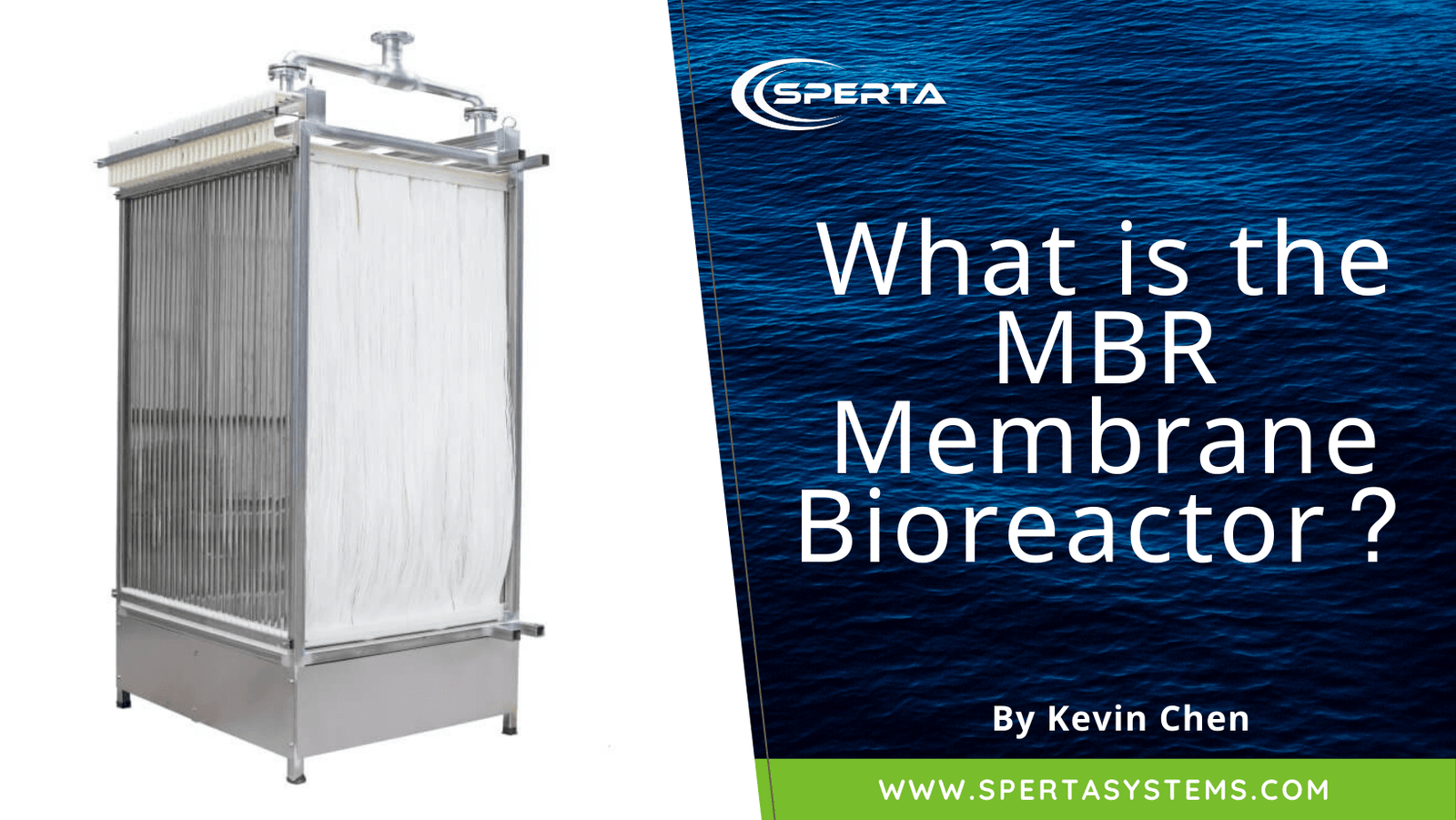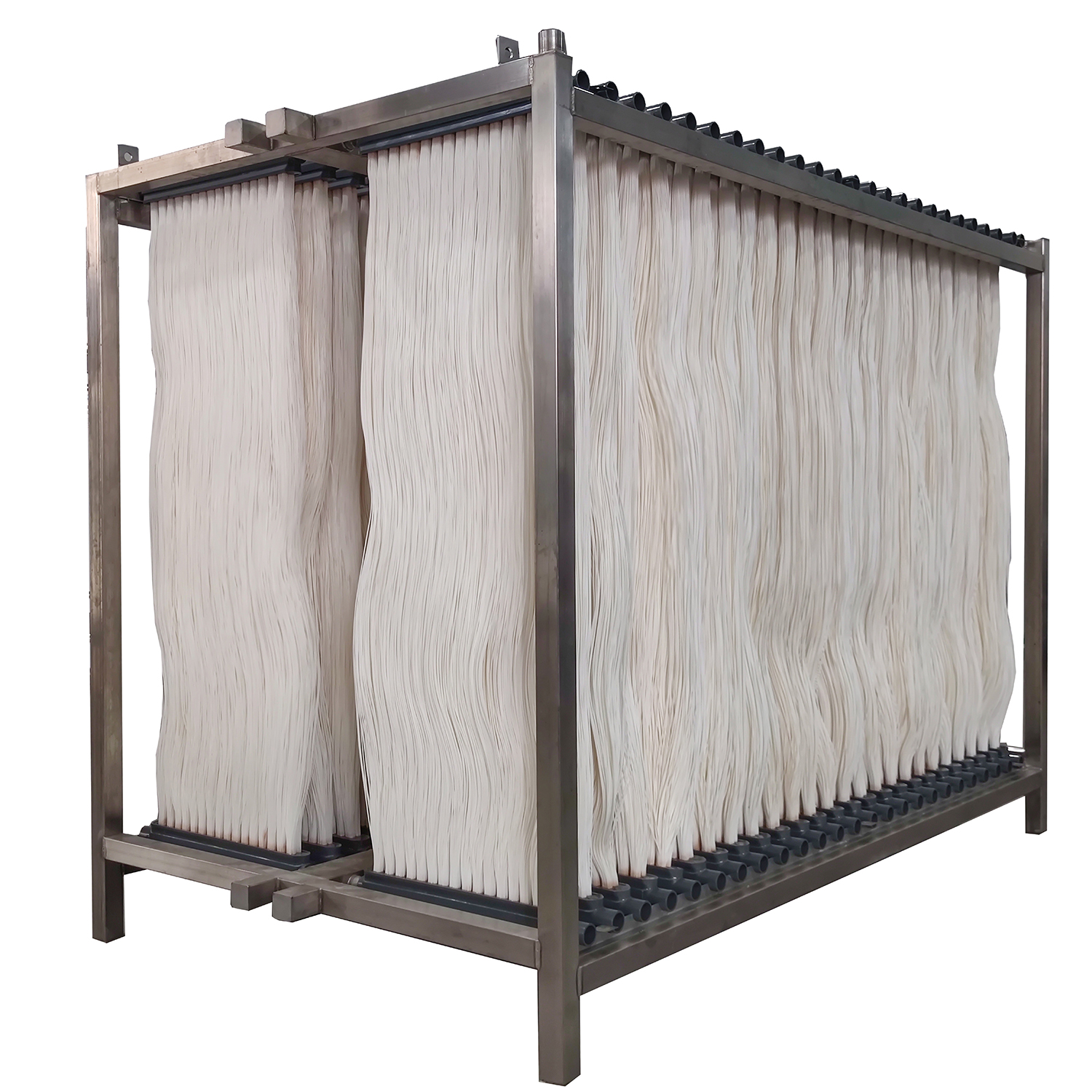How Membrane Bioreactor Technology Is Revolutionizing Wastewater Treatment
Wiki Article
Exactly How Membrane Layer Bioreactors Are Transforming Water Purification Equipments
The emergence of membrane bioreactors (MBRs) represents a significant development in the field of water purification, merging biological treatment processes with cutting-edge membrane filtration modern technologies. As international water deficiency intensifies, the role of MBRs in facilitating potable water reuse and lasting water monitoring comes to be progressively important.Introduction of Membrane Bioreactors
Membrane bioreactors (MBRs) represent a substantial innovation in water filtration innovation, as they integrate biological therapy procedures with membrane filtration. This assimilation boosts the effectiveness of wastewater treatment by making use of bacteria to deteriorate natural contaminants while at the same time utilizing semi-permeable membranes to separate cured water from put on hold microorganisms and solids.The MBR system usually contains an organic reactor where the microbial populace metabolizes pollutants, followed by a membrane layer filtering unit that preserves biomass and enables just tidy water to pass through. This twin performance causes higher effluent quality contrasted to conventional therapy methods. MBRs can be run in both batch and continual flow settings, providing adaptability in design and application.
They likewise make it possible for the recovery of water for reuse, thus contributing to water sustainability efforts. On the whole, MBRs are at the center of improving water treatment effectiveness and high quality, showcasing the possibility for cutting-edge remedies in environmental administration.
Benefits of MBR Innovation
The assimilation of organic therapy with membrane layer purification offers numerous advantages for water purification processes. One of the key advantages of Membrane layer Bioreactor (MBR) technology is its ability to efficiently remove both organic and inorganic contaminants, leading to top quality effluent. The membranes act as a physical barrier, preventing put on hold solids and virus from travelling through, which boosts the general security and dependability of treated water.Additionally, MBR systems call for a smaller sized impact compared to conventional therapy approaches, permitting a lot more effective space utilization. This portable style is especially helpful in city setups where land is limited. MBRs also show functional flexibility, suiting differing influent high qualities and flow prices without considerable performance destruction.
Moreover, the process supplies improved nutrient removal capacities, especially for nitrogen and phosphorus, which are crucial for protecting against eutrophication in getting waters. The decreased sludge manufacturing connected with MBR technology likewise translates to decrease disposal costs, making it a cost-effective option over time - Membrane Bioreactor. On the whole, the advantages of MBR modern technology position it as a leading selection for sustainable and ingenious water purification systems, attending to both ecological and economic problems
Applications in Water Purification
Applications of Membrane Layer Bioreactor (MBR) technology in water purification are varied and impactful, attending to numerous treatment requires throughout multiple markets. MBRs effectively integrate organic therapy processes with membrane purification, making them perfect for local wastewater therapy, industrial effluent administration, and also safe and clean water reuse initiatives.In municipal settings, MBRs are progressively utilized to improve the top quality of dealt with wastewater, enabling conformity with stringent discharge regulations and helping with the recycling of water for irrigation and non-potable uses. Their small style likewise makes them suitable for urban settings where room is limited.
Industrially, MBR technology is used to deal with process water and wastewater, especially in industries such as food and drink, drugs, and fabrics. By properly eliminating pollutants and suspended solids, go right here MBRs assist markets reduce environmental impacts while recovering beneficial sources from wastewater streams.
In Addition, MBRs are getting traction in decentralized water treatment applications, where small-scale systems can be released in remote areas or developing regions. This flexibility makes it possible click over here for neighborhoods to accomplish sustainable water monitoring options, improving access to tidy water while lowering dependence on conventional treatment approaches.
Study and Success Stories

In another instance, a textile production facility in Bangladesh took on MBR innovation to resolve its wastewater difficulties. The system reduced chemical oxygen need (COD) levels from 1,200 mg/L to much less than 100 mg/L, therefore meeting governing standards and dramatically reducing ecological effect.
The College of Cape Town's MBR installment has actually confirmed effective in treating greywater for non-potable reuse on university. This task not only saves drinkable water yet likewise functions as an instructional model for lasting methods.
Additionally, a seafood handling plant in Norway made use of MBR innovation to deal with effluents containing high degrees of organic issue, achieving over 90% pollutant elimination. These case research studies underscore MBR technology's versatility and its crucial duty in improving water high quality throughout diverse applications.
Future of Water Treatment Solutions
As international water deficiency and air pollution obstacles intensify, innovative water treatment remedies are becoming progressively important to make certain lasting accessibility to tidy water. The future of water therapy depends on the assimilation of sophisticated modern technologies that improve the efficiency and performance of purification procedures. Membrane layer bioreactors (MBRs) go to the leading edge of this development, combining organic treatment with membrane purification to create top quality effluent ideal for various applications.
Arising patterns such as source recovery from wastewater, consisting of nutrients and power, will further change therapy centers into eco-friendly hubs. Innovations in nanotechnology and membrane materials promise improved efficiency and long life of purification systems.

Verdict
In final thought, membrane layer bioreactors represent a considerable development in water filtration technologies, effectively incorporating organic treatment with innovative membrane filtration. The many benefits, consisting of improved effluent quality and minimized spatial demands, make MBRs specifically suitable for city applications. Their function in safe and clean water reuse and lasting water monitoring highlights their relevance in attending to international water scarcity difficulties. Continued r & d will even more improve the effectiveness and fostering of MBR technology, making certain a durable future for water treatment remedies.The introduction of membrane layer bioreactors (MBRs) stands for a substantial development in the area of water purification, combining organic therapy processes with sophisticated membrane filtering modern technologies. As global water scarcity magnifies, the function of MBRs in helping with drinkable water reuse and sustainable water monitoring ends up being progressively vital. They likewise enable the recuperation of water for reuse, thus adding to water sustainability efforts.As international water shortage and contamination difficulties increase, ingenious water therapy options are ending up being progressively essential to make sure lasting access to tidy water. Their duty in potable water reuse and sustainable water monitoring highlights their significance in dealing with international water shortage challenges.
Report this wiki page